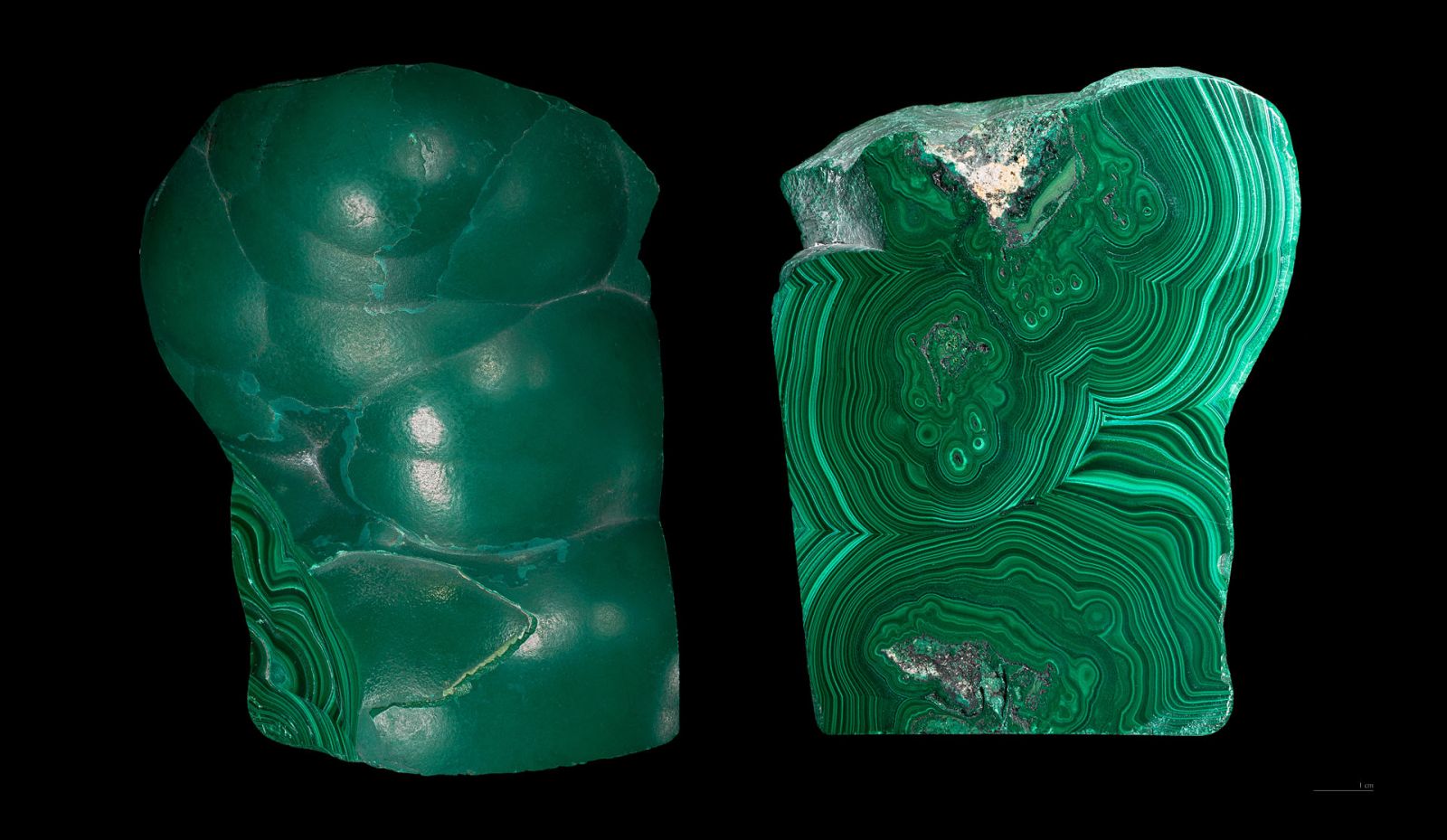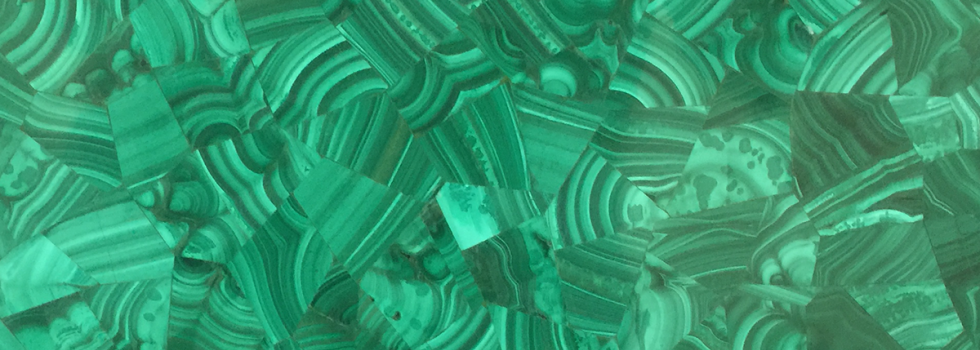Malachite

From wikipedia
Malachite is a copper carbonate hydroxide mineral, with the formula Cu2CO3(OH)2. This opaque, green banded mineral crystallizes in the monoclinic crystal system, and most often forms botryoidal, fibrous, or stalagmitic masses, in fractures and spaces, deep underground, where the water table and hydrothermal fluids provide the means for chemical precipitation. Individual crystals are rare but do occur as slender to acicular prisms. Pseudomorphs after more tabular or blocky azuritecrystals also occur.
Etymology and history of Malachite
The stone's name derives (via Latin: molochītis, Middle French: melochite, and Middle English melochites) from GreekΜολοχίτης λίθος molochitis lithos, "mallow-green stone", from μολόχη molōchē, variant of μαλάχη malāchē, "mallow". The mineral was given this name due to its resemblance to the leaves of the Mallow plant.
Archeological evidence indicates that the mineral has been mined and smelted to obtain copper at Timna Valley in Israel for over 3,000 years. Since then, malachite has been used as both an ornamental stone and as a gemstone.
Use
Malachite was used as a mineral pigment in green paints from antiquity until about 1800.[7] The pigment is moderately lightfast, very sensitive to acids, and varying in color. The natural form was being replaced by its synthetic form, verditer, among other synthetic greens. It is also used for decorative purposes, such as in the Malachite Room in the Hermitage, which features a huge malachite vase, and the Malachite Room in Castillo de Chapultepec in Mexico City. "The Tazza", a large malachite vase, one of the largest pieces of malachite in North America and a gift from Tsar Nicholas II, stands as the focal point in the center of the room of Linda Hall Library.
Occurrence
Malachite often results from weathering of copper ores and is often found together with azurite (Cu3(CO3)2(OH)2), goethite, and calcite. Except for its vibrant green color, the properties of malachite are similar to those of azurite and aggregates of the two minerals occur frequently. Malachite is more common than azurite and is typically associated with copper deposits around limestones, the source of the carbonate.
Large quantities of malachite have been mined in the Urals, Russia. Ural malachite is not being mined at present, but G.N Vertushkova reports the possible discovery of new deposits of malachite in the Urals. It is found worldwide including in theDemocratic Republic of Congo; Gabon; Zambia; Tsumeb, Namibia; Mexico; Broken Hill, New South Wales; Lyon, France;Timna Valley, Israel; and the Southwestern United States, most notably in Arizona.





